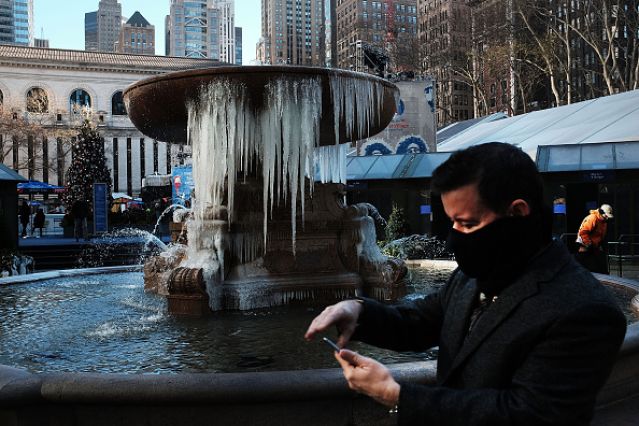The New York City Emergency Management Department issued a travel advisory for Saturday as snow and freezing temperatures are expected throughout the day, potentially making roads and sidewalks slippery. Light snow is expected to begin early on Saturday morning, with an accumulation of 2 to 4 inches, according to forecasts. The Emergency Management Department urges New Yorkers to allow extra time for travel and to be careful while driving, walking or biking. RELATED:How cold will it be in New York and where can I get help? Freezing temperatures are expected to continue through Monday. When the thermometer reads below 32 degrees, a Code Blue Weather Emergency will be issued. No one looking for shelter will be denied during the code, the city said. WEEKEND WEATHER OUTLOOK
New Yorkers are asked to be prepared for an extended period of below freezing temperatures, the city advised. SAFETY TIPS FOR PEDESTRIANS
The city offered these safety tips to consider when walking:
SAFETY TIPS FOR DRIVERS The city offered these safety tips to consider when on the road:
Salt’s loaded, trucks are ready. @NYCSanitation’s prepared for whatever winter has in store tonight & tomorrow. pic.twitter.com/GIsuPeOEGC
— NYC Mayor’s Office (@NYCMayorsOffice) January 5, 2017
Have an emergency supply kit packed at home in case you get snowed in this winter! pic.twitter.com/Qtr8hNVb6D
— NYCEM (@nycoem) January 6, 2017
If you’re using a space heater to stay warm, be #FDNYSmart & plug your heater directly into the wall
— FDNY (@FDNY) January 6, 2017
There’s a Weather Advisory tonight through tomorrow AM. Expecting 1-4 inches of snow. Stay safe and bundle up! https://t.co/7UbUWjnwNM
— City of New York (@nycgov) January 5, 2017



















